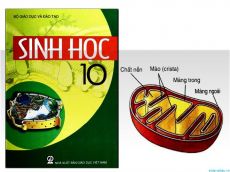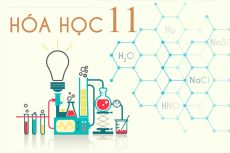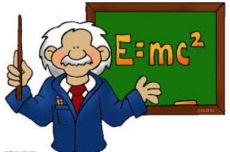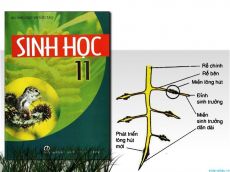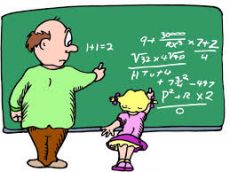It was the first photograph that I had ever seen, and it fascinated me. I can remember holding it at every angle in order to catch the flickering light from the oil lamp on the dresser. The man in the photograph was unsmiling, but his eyes were kind. I had never met him, but I felt that I knew him. One evening when I was looking at the photograph, as I always did before I went to sleep, I noticed a shadow across the man’s thin face. I moved the photograph so that the shadow lay perfectly around his hollow cheecks. How different he looked!
That night I could not sleep, thinking about the letter that I would write. First, I would tell him that I was eleven years old, and that if he had a little girl my age, she could write to me instead of him. I knew that he was a very busy man. Then I would explain to him the real purpose of my letter. I would tell him how wonderful he looked with the shadow that I had seen across his photograph, and I would most carefully suggest that he grow whiskers.
Four months later when I met him at the train station near my home in Westfield, New York, he was wearing a full beard. He was so much taller than I had imagined from my tiny photograph.
“Ladies and gentlemen,” he said, “I have no speech to make and no time to make it in. I appear before you that I may see you and that you may see me.” Then he picked me right up and kissed me on both cheeks. The whiskers scratched. “Do you think I look better, my little friend?” he asked me.
My name is Grace Bedell, and the man in the photograph was Abraham Lincoln.
The little girl could not sleep because she was ...............
Suy nghĩ và trả lời câu hỏi trước khi xem đáp án
Lời giải:
Báo saiđoạn 2: “That night I could not sleep, thinking about the letter that I would write”
Sick: ốm
Exited: hào hứng
Lonely: cô đơn
Sad: buồn
Câu hỏi liên quan
-
Read the following passage and mark the letter A, B, C, or D on your answer sheet to indicate the correct answer to each of the questions:
Twenty-five students from Walling School are currently living in France. They are there for three months as part of a living-abroad project. The 16- and 17-year-old students are living with French families and attending a French school. Most of the students have taken French language classes for 3 or 4 years and are finally getting an opportunity to use their French.
Not only are students learning a new language, but they are learning about a new culture, too. Students have been particularly surprised about the French attitude towards food. “They won’t leave anything on their plate,” says Vanessa Athol. “They aren’t wasteful at all.” Vanessa has vowed to be more careful with waste when returning to the United States.
The group’s chaperone, Mrs. Smith, has been pleased with the students’ acquisition of language. “Even the most timid are trying their best to speak. The students are learning a lot. I’m very impressed,” she said. Mrs. Smith added that she thinks living with a French family makes a difference because students are forced to speak French. “We are all very grateful to the French families who are hosting us.”
The French families are happy to have the students, as they are getting to leam about American culture. Both groups will be celebrating the exchange at a large potluck dinner at the end of the stay. There will be a slide show of memories and the students will speak about their experiences. Currently, the American students are periodically posting pictures and student essays on the Walling School website. “Living in France is an experience I’ll never forget,” writes student Tina Davis. “I know I’ll want to eat these croissants and this Camembert for the rest of my life!”According to the passage, which of the following is TRUE?
-
Read the following passage and mark the letter A, B, C, or D on your answer sheet to indicate the correct answer to each of the questions:
Line Europeans who arrived in the Americas, the first American Indians were immigrants. Because Indians were nomadic hunters and gatherers, they probably arrived in search of new hunting grounds from Asia when they crossed the ice-covered Bering Strait to Alaska. Anthropologists estimate that the entire Indian population north of Mexico was slightly greater than 1,020,000 when the first settlers arrived from Europe. Although Native Americans belonged to one geographic race, their cultures and languages were only marginally similar, and by and large, they had different ways of life. Nomadic migrations required Indians to construct shelters that did not need to be transported, but could be easily erected from the materials found in their new location.
Eastern Woodland Indian tribes lived in bark-covered wigwams that were shaped like cones or domes. The frame for the hut was made of young trees firmly driven into the ground, and then bent overhead to tie together with bark fibers or strings of animal hides. Sheets and slabs of bark were attached to the frame to construct the roof and walls, leaving an opening to serve as a door and to allow smoke to escape. The Iroquois in north eastern regions built longhouses that were more spacious than wigwams because five to a dozen families lived under one roof. During the winter, they plastered clay to the poles of the frame to protect the inhabitants from wind and rain.
Pueblo Indians who lived in the southwest portion of the United States in northern Arizona and New Mexico constructed elaborate housing with several stories and many rooms. Each family unit had only one room, and their ancestors dug shelters in the walls of cliffs and canyons. The ground story of a Pueblo dwelling had no doors or windows in order to prevent enemies from entering. The next level was set back the width of one room, and the row of rooms above it was set back once again, giving their houses the appearance of a terrace Pueblos used ladders to climb to the upper levels and pulled them in when all family members returned for the night.
Indians living in deserts used sandstone and clay as construction materials. Those who lived in the valleys of rivers even made bricks of clay with wood chips to add strength and to prevent the clay from cracking. To make roofs, Pueblos tied logs together to make rafters and laid them across the two outside walls. On top of the rafters, layers of tree branches, sticks, grass, and brush created a solid roof to preclude the water from leaking inside. Pueblo dwellings were dark because windows were often not large enough to allow much light.The author of the passage implies that Indians
-
DESERTIFICATION
Desertification is the degradation of once-productive land into unproductive or poorly productive land. Since the first great urban-agricultural centers in Mesopotamia nearly 6,000 years ago, human activity has had a destructive impact on soil quality, leading to gradual desertification in virtually every area of the world.
It is a common misconception that desertification is caused by droughts. Although drought does make land more vulnerable, well-managed land can survive droughts and recover, even in arid regions. Another mistaken belief is that the process occurs only along the edges of deserts. In fact, it may take place in any arid or semiarid region, especially where poor land management is practiced. Most vulnerable, however, are the transitional zones between deserts and arable land; wherever human activity leads to land abuse in these fragile marginal areas, soil destruction is inevitable.
[1] Agriculture and overgrazing are the two major sources of desertification. [2] Large-scale farming requires extensive irrigation, which ultimately destroys lands by depleting its nutrients and leaching minerals into the topsoil. [3] Grazing is especially destructive to land because, in addition to depleting cover vegetation, herds of grazing mammals also trample the fine organic particles of the topsoil, leading to soil compaction and
erosion. [4] It takes about 500 years for the earth to build up 3 centimeters of topsoil. However, cattle ranching and agriculture can deplete as much as 2 to 3 centimeters of topsoil every 25 years - 60 to 80 times faster than it can be replaced by nature.
Salination is a type of land degradation that involves an increase in the salt content of the soil. This usually occurs as a result of improper irrigation practices. The greatest Mesopotamian empires- Sumer, Akkad and Babylon- were built on the surplus of the enormously productive soil of the ancient Tigris- Euphrates alluvial plain. After nearly a thousand years of intensive cultivation, land quality was in evident decline. In response, around 2800 BC the Sumerians began digging the huge Tigris-Euphrates canal system to irrigate the exhausted soil. A temporary gain in crop yield was achieved in this way, but over-irrigation was to have serious and unforeseen consequences. From as early as 2400 BC we find Sumerian documents referring to salinization as a soil problem. It is believed that the fall of the Akkadian Empire around 2150 BC may have been due to a catastrophic failure in land productivity; the soil was literally turned into salt. Even today, four thousand years later, vast tracks of salinized land between the Tigris and Euphrates rivers still resemble rock-hard fields of snow.
Soil erosion is another form of desertification. It is a self reinforcing process; once the cycle of degradation begins, conditions are set for continual deterioration. As the vegetative cover begins to disappear, soil becomes more vulnerable to raindrop impact. Water runs off instead of soaking in to provide moisture for plans. This further diminishes plan cover by leaching away nutrients from the soil. As soil quality declines and runoff is increased, floods become more frequent and more severe. Flooding washes away topsoil, the thin, rich, uppermost layer of the earth’s soil, and leaves finer underlying particles more vulnerable to wind erosion. Topsoil contains the earth’s greatest concentration of organic matter and microorganisms, and is where most of the earth’s land-based biological activity occurs. Without this fragile coat of nutrient-laden material, plan life cannot exist. An extreme case of its erosion is found in the Sahel, a transitional zone between the Sahara Desert and the tro -
The Native American peoples of the north Pacific Coast created a highly complex maritime culture as they invented modes of production unique to their special environment. In addition to their sophisticated technical culture, they also attained one of the most complex social organizations of any nonagricultural people in the world.
In a division of labor similar to that of the hunting peoples in the interior and among foraging peoples throughout the world, the men did most of the fishing, and the women processed the catch. Women also specialized in the gathering of the abundant shellfish that lived closer to shore. They collected oysters, crabs, sea urchins, mussels, abalone, and clams, which they could gather while remaining close to their children. The maritime life harvested by the women not only provided food, but also supplied more of the raw materials for making tools than did fish gathered by the men. Of particular importance for the native tool than did the fish gathered by the men. Of particular made from the larger mussel shells, and a variety of cutting edges that could be made from other marine shells.
The women used their tools to process all of the fish and marine mammals brought in by the men. They cleaned the fish, and dried vast quantities of them for the winter. They sun-dried fish when practical, but in the rainy climate of the coastal area they also used smokehouses to preserve tons of fish and other seafood annually. Each product had its own peculiar characteristics that demanded a particular way of cutting or drying the meat, and each task required its own cutting blades and other utensils.
After drying the fish, the women pounded some of them into fish meal, which was an easily transported food used in soups, stews, or other dishes to provide protein and thickening in the absence of fresh fish or while on long trips. The women also made a cheese-like substance from a mixture of fish and roe by aging it in storehouses or by burying it in wooden boxes or pits lined with rocks and tree leaves.According to the passage, what is true of the “division of labor” mentioned in line 4?
-
Read the following passage and mark the letter A, B, C or D on your answer sheet to indicate the correct answer to each of the questions:
Washington was the first city in history to be created solely for the purpose of governance. Following the Revolution, members of Congress had hotly debated the question of a permanent home for themselves and for those departments – the Treasury, the Patent Office and so on – which even the sketchiest of central governments would feel obliged to establish. In 1790, largely in order to put an end to congressional bickering, George Washington was charged with selecting a site for the newly designated federal district. Not much to anyone’s surprise but to the disappointment of many he chose a tract of land on the banks of the Potomac River, a few miles upstream from his beloved plantation Mount Vernon.
The District of Columbia was taken in part from Virginia and in part from Maryland. At the time it was laid out, its hundred square miles consisted of gently rolling hills, some under cultivation and the rest heavily wooded, with a number of creeks and much swampy land along the Potomac. There is now a section of Washington that is commonly referred to as Foggy Bottom; that section bore the same nickname a hundred and eighty years ago.
Two ports cities, Alexandria and Georgetown, flourished within sight of the new capital and gave it access by ship to the most important cities of the infant nation – Charleston, Baltimore, Philadelphia, New York, Newport, Salem and Portsmouth – and also to the far-off ports of England and the Continent.Read the following passage and mark the letter A, B, C or D on your answer sheet to indicate the correct answer to each of the questions:
Washington was the first city in history to be created solely for the purpose of governance. Following the Revolution, members of Congress had hotly debated the question of a permanent home for themselves and for those departments – the Treasury, the Patent Office and so on – which even the sketchiest of central governments would feel obliged to establish. In 1790, largely in order to put an end to congressional bickering, George Washington was charged with selecting a site for the newly designated federal district. Not much to anyone’s surprise but to the disappointment of many he chose a tract of land on the banks of the Potomac River, a few miles upstream from his beloved plantation Mount Vernon.
The District of Columbia was taken in part from Virginia and in part from Maryland. At the time it was laid out, its hundred square miles consisted of gently rolling hills, some under cultivation and the rest heavily wooded, with a number of creeks and much swampy land along the Potomac. There is now a section of Washington that is commonly referred to as Foggy Bottom; that section bore the same nickname a hundred and eighty years ago.
Two ports cities, Alexandria and Georgetown, flourished within sight of the new capital and gave it access by ship to the most important cities of the infant nation – Charleston, Baltimore, Philadelphia, New York, Newport, Salem and Portsmouth – and also to the far-off ports of England and the Continent.Read the following passage and mark the letter A, B, C or D on your answer sheet to indicate the correct answer to each of the questions:
Washington was the first city in history to be created solely for the purpose of governance. Following the Revolution, members of Congress had hotly debated the question of a permanent home for themselves and for those departments – the Treasury, the Patent Office and so on – which even the sketchiest of central governments would feel obliged to establish. In 1790, largely in order to put an end to congressional bickering, George Washington was charged with selecting a site for the newly designated federal district. Not much to anyone’s surprise but to the disappointment of many he chose a tract of land on the banks of the Po -
Read the following passage and mark the letter A, B, C, or D on your answer sheet to indicate the correct answer to each of the questions:
Political and economic reforms launched in 1986 have transformed the country from one of the poorest in the world, with per capita income around US $100, to lower middle income status within a quarter of a century with per capita income of around US $2,100 by the end of 2015.
Vietnam’s per capita GDP growth since 1990 has been among the fastest in the world, averaging 5.5 percent a year since 1990, and 6.4 percent per year in the 2000s. Vietnam’s economy continued to strengthen in 2015, with estimated GDP growth rate of 6.7 percent for the whole year.
The Vietnamese population is also better educated and has a higher life expectancy than most countries with a similar per capita income. The maternal mortality ratio has dropped below the upper-middle- income country average, while under-five mortality rate has fallen by half, to a rate slightly above that average. Access to basic infrastructure has also improved substantially. Electricity is now available to almost all households, up from less than half in 1993. Access to clean water and modem sanitation has risen from less than 50 percent of all households to more than 75 percent.
Vietnam’s Socio-Economic Development Strategy (SEDS) 2011-2020 gives attention to structural reforms, environmental sustainability, social equity, and emerging issues of macroeconomic stability. It defines three "breakthrough areas": promoting human resources/skills development (particularly skills for modem industry and innovation), improving market institutions, and infrastructure development.
In addition, the five-year Socio-Economic Development Plan 2011-2015 focused on three critical restructuring areas - the banking sector, state-owned enterprises and public investment - that are needed to achieve these objectives. The recent draft of the SEDP 2016-2020 acknowledges the slow progress of the reform priorities of the SEDP 2011-2015.
With agriculture still accounting for almost half the labour force, and with significantly lower labour productivity than in the industry and services sectors, future gains from structural transformation could be substantial. The transformation from state to private ownership of the economy is even less advanced. The state also wields too much influence in allocating land and capital, giving rise to heavy economy wide inefficiencies. So, adjusting the role of the state to support a competitive private sector-led market economy remains a major opportunity. This will be important for enhancing productivity growth which has been stagnating for a long time.Which of the followings is NOT mentioned as an example of development in Vietnam?
-
Read the following passage and mark the letter A, B, C, or D on your answer sheet to indicate the correct answer to each of the questions:
Thirty years ago, Lake Ponkapog in Hartwell, New Jersey, was full of life. Many birds and animals lived beside the water, which was full of fish. Now there are few birds, animals, and fish. The lake water is polluted. It is a dirty brown colour, and it is filled with strange plants.
How did this happen? First, we must think about how water gets into Lake Ponkapog. When it rains, water comes into the lake from all around. In the past, there were woods all around Lake Ponkapog, so the rainwater was clean.
Now there are many homes on the lake hore. People often use the chemicals in their gardens. They use other chemicals inside their houses for cleaning and killing insects. There are also many businesses. Businesses use chemicals in their machines or stores. Other chemicals fall onto the ground from cars or trucks. When it rains, the rainwater flows by these homes and businesses. It picks up all the chemicals and then pours them into the lake. They pollute the water and kill the animal life.
There is still another problem at the lake: exotic plants. These plants come from other countries. They have no natural enemies here, and they grow very quickly. In a short time, they can fill up a lake. Then there is no room for other plants. The plants that normally grow there die. These plants gave many animals and fish their foods or their homes. So now those animals and fish die, too.
People in Hartwell are worried. They love their lake and want to save it. Will it be possible? A clean lake must have clean rainwater going into it. Clean rainwater is possible only if people are more careful about chemicals at home and at work. They must also be more careful about gas and oil and other chemicals on the ground.Read the following passage and mark the letter A, B, C, or D on your answer sheet to indicate the correct answer to each of the questions:
Thirty years ago, Lake Ponkapog in Hartwell, New Jersey, was full of life. Many birds and animals lived beside the water, which was full of fish. Now there are few birds, animals, and fish. The lake water is polluted. It is a dirty brown colour, and it is filled with strange plants.
How did this happen? First, we must think about how water gets into Lake Ponkapog. When it rains, water comes into the lake from all around. In the past, there were woods all around Lake Ponkapog, so the rainwater was clean.
Now there are many homes on the lake hore. People often use the chemicals in their gardens. They use other chemicals inside their houses for cleaning and killing insects. There are also many businesses. Businesses use chemicals in their machines or stores. Other chemicals fall onto the ground from cars or trucks. When it rains, the rainwater flows by these homes and businesses. It picks up all the chemicals and then pours them into the lake. They pollute the water and kill the animal life.
There is still another problem at the lake: exotic plants. These plants come from other countries. They have no natural enemies here, and they grow very quickly. In a short time, they can fill up a lake. Then there is no room for other plants. The plants that normally grow there die. These plants gave many animals and fish their foods or their homes. So now those animals and fish die, too.
People in Hartwell are worried. They love their lake and want to save it. Will it be possible? A clean lake must have clean rainwater going into it. Clean rainwater is possible only if people are more careful about chemicals at home and at work. They must also be more careful about gas and oil and other chemicals on the ground.Read the following passage and mark the letter A, B, C, or D on your answer sheet to indicate the correct answer to each of the questions:
Thirty years ago, Lake Ponkapog in Hartwell, New J -
Read the following passage and mark the letter A, B, C, or D on your answer sheet to indicate the correct answer to each of the questions:
William Sydney Porter (1862-1910), who wrote under the pseudonym of O. Henry, was born in North Carolina. His only formal education was to attend his Aunt Lina’s school until the age of fifteen, where he developed his lifelong love of books. By 1881 he was a licensed pharmacist. However, within a year, on the recommendation of a medical colleague of his Father’s, Porter moved to La Salle County in Texas for two years herding sheep. During this time, Webster’s Unabridged Dictionary was his constant companion, and Porter gained a knowledge of ranch life that he later incorporated into many of his short stories. He then moved to Austin for three years, and during this time the first recorded use of his pseudonym appeared, allegedly derived from his habit of calling “Oh, Henry” to a family cat. In 1887, Porter married Athol Estes. He worked as a draftsman, then as a bank teller for the First National Bank.
In 1894 Porter founded his own humor weekly, the “Rolling Stone”, a venture that failed within a year, and later wrote a column for the Houston Daily Post. In the meantime, the First National Bank was examined, and the subsequent indictment of 1886 stated that Porter had embezzled funds. Porter then fled to New Orleans, and later to Honduras, leaving his wife and child in Austin. He returned in 1897 because of his wife’s continued ill-health, however she died six months later. Then, in 1898 Porter was found guilty and sentenced to five years imprisonment in Ohio. At the age of thirty five, he entered prison as a defeated man; he had lost his job, his home, his wife, and finally his freedom. He emerged from prison three years later, reborn as O. Henry, the pseudonym he now used to hide his true identity. He wrote at least twelve stories in jail, and after re-gaining his freedom, went to New York City, where he published more than 300 stories and gained fame as America’s favorite short Story writer. Porter married again in 1907, but after months of poor health, he died in New York City at the age of forty-eight in 1910. O. Henry’s stories have been translated all over the world.The author implies which of the following is true?
-
The attraction of gold is as old as history. Since ancient times, gold has been the object of dreams and obsessions. Western literature is full of characters who kill for gold or hoard it, from King Midas in the ancient Greek myths, to Fagin in Dickens' Oliver Twist. These characters go to evil extremes to get or keep their gold and they get the punishment they deserve. Most people would not be willing to go to such extremes, of course, but they would not question the assumption that gold has lasting value above and beyond any local currency. Societies change over time, customs and currencies evolve, but gold remains. A wedding ring, for example, must be gold, and so should any serious gift of jewelry. In fact, giving and wearing gold is still a mark of prestige in our post-industrial society, though gold is no longer valued as it used to be thousands of years ago.
Why is gold so valuable? True, it is shiny, durable, and rare, but it is far less useful than many other minerals or metals. It is also not like stock in a company, where the value of the stock depends on the performance of the company. Gold, on the contrary, like any currency, is valuable precisely because people believe it is valuable. That is, if people were willing to accept seashells for their labor and could use them to pay for food, fuel, and other commodities, then seashells would become a valuable currency. Thus, the value of gold depends on the collective belief that gold will continue to be valuable. As long as demand for gold remains steady, the price will hold steady; if demand is high, it will continue to increase in value. But if people should someday lose faith in gold, the price of gold could fall sharply.
Another factor that has affected the price of gold has been the increasing difficulty in acquiring it. Today, most of the gold left in the grounds is in microscopic pieces mixed with rock. To get it, miners must dig up tons and tons of rock, and then spray it with chemicals to separate out the gold. For one ounce of gold - a wedding ring, for example - the mine processes about 30 tons of rock. This is already a costly operation. But there are also hidden social and environmental costs. The mining and processing of gold is ruinous to the environment and to the health of people living nearby. Most of these mines are in poor regions where the people have had little voice in whether there should be mines and how the mines should be run. The large multinational mining companies simply bought the land and opened the mines. However, as people and governments begin to realize the extent of the damage caused by the mines, the situation might change.
Indeed, if the mining companies ever have to pay the full environmental and social costs of mining gold, the price of gold is likely to climb yet higher.The word “it” in paragraph 2 refer to:
-
Read the following passage and mark the letter A, B, C, or D on your answer sheet to indicate the correct answer to each of the questions:
The ocean bottom - a region nearly 2.5 times greater than the total land area of the Earth - is a vast frontier that even today is largely unexplored and uncharted. Until about a century ago, the deep ocean floor was completely inaccessible, hidden beneath waters averaging over 3,600 meters deep. Totally without light and subjected to intense pressures hundreds of times greater than at the Earth's surface, the deep-ocean bottom is a hostile environment to humans, in some ways as forbidding and remote as the void of outer space.
Although researchers have taken samples of deep-ocean rocks and sediments for over a century, the first detailed global investigation of the ocean bottom did not actually start until 1968, with the beginning of the National Science Foundation's Deep Sea Drilling Project (DSDP). Using techniques first developed for the offshore oil and gas industry, the DSDP's drill ship, the Glomar Challenger, was able to maintain a steady position on the ocean's surface and drill in very deep waters, extracting samples of sediments and rock from the ocean floor.
The Glomar Challenger completed 96 voyages in a 15-year research program that ended in November 1983. During this time, the vessel logged 600,000 kilometers and took almost 20,000 core samples of seabed sediments and rocks at 624 drilling sites around the world. The Glomar Challenger's core samples have allowed geologists to reconstruct what the planet looked like hundreds of millions of years ago and to calculate what it will probably look like millions of years in the future. Today, largely on the strength of evidence gathered during the Glomar Challenger's voyages, nearly all earth scientists agree on the theories of plate tectonics and continental drift that explain many of the geological processes that shape the Earth.
The cores of sediment drilled by the Glomar Challenger have also yielded information critical to understanding the world's past climates. Deep-ocean sediments provide a climatic record stretching back hundreds of millions of years, because they are largely isolated from the mechanical erosion and the intense chemical and biological activity that rapidly destroy much land-based evidence of past climates. This record has already provided insights into the patterns and causes of past climatic change - information that may be used to predict future climates.Which of the following is NOT true of the Glomar Challenger?
-
Read the following passage and mark the letter A, B, C, or D on your answer sheet to indicate the correct answer to each of the questions:
After the Anasazi abandoned southwestern Colorado in the late 1200s or early 1300s, history’s pages are blank. The Anasazi were masons and apartment builders who occupied the deserts, river valleys, and mesas of this region for over a thousand years, building structures that have weathered the test of time.
The first Europeans to visit southwestern Colorado were the ever-restless, ambitious Spanish, who sought gold, pelts, and slaves. In 1765, under orders from the Spanish governor in Santa Fe, Juan Maria Antonio Rivera led a prospecting and trading party into the region. Near the Dolores River in southwestern Colorado, he found some insignificant silver-bearing rocks, and it is thought that it was he who named the mountains nearby the Sierra de la Plata or the Silver Mountains. Rivera found little of commercial value that would interest his superiors in Santa Fe, but he did open up a route that would soon lead to the establishment of the Old Spanish Trail. This expedition and others to follow left names on the land which are only reminders we have today that the Spanish once explored this region.
In 1776, one of the men who had accompanied Rivera, Andre Muniz, acted as a guide for another expedition. That party entered southwestern Colorado in search of a route west to California, traveling near today’s towns of Durango and Dolores. Along the way, they camped at the base of a large green mesa which today carries the name Mesa Verde. They were the first Europeans to record the discovery of an Anasazi archeological site in southwestern Colorado.
By the early 1800s, American mountain men and trappers were exploring the area in their quest for beaver pelts. Men like Peg-leg Smith were outfitted with supplies in the crossroads trapping town of Taos, New Mexico. These adventurous American trappers were a tough bunch. They, possibly more than any other newcomers, penetrated deeply into the mountain fastness of southwestern Colorado, bringing back valuable information about the area and discovering new routes through the mountains. One of the trappers, William Becknell, the father of the Santa Fe Trail, camped in the area of Mesa Verde, where he found pottery shards, stone houses, and other Anasazi remains.The purpose of the expedition of 1776 was .
-
Read the following passage and mark the letter A, B, C or D on your answer sheet to indicate the correct word or phrase that best fits each of the numbered blanks .
A recent (1)....... of a language learning magazine has consulted a number of experts in the field of second language acquisition. Their advice may prove invaluable for those considering a language course. One suggestion is that you access whether you are likely to be successful (2)........ learning a language. Did you enjoy studying language at school, for example? Do you have enough time to learn a language ? The major cost will be your own time and effort. Therefore, you must make sure that course on offer leads to a recognized qualification. Also, be realistic in your (3).......... If you don’t set achievable aims, you are more likely to give up. Don’t be deceived into thinking that the most expensive courses are the best. Shop around to get the best possible value for money. You should also bear in your mind that the quicker you learn a language, the more quickly you forget it. Sandra Miller, a French teacher, tried to teach herself German by enrolling on a crash course. Already fluent in four languages and with a sound knowledge of teaching methodology her chances of (4)........ progress were high. Three years on she remembers very little. She feels her biggest mistake was not to follow up her first experience. "I think the teacher’s role is important. It's so nice to have somebody give you a/an (5) ........... ”.
(4)................................
-
Read the following passage and mark the letter A, B, C, or D on your answer sheet to indicate the correct answer to each of the questions:
Puerto Rico, a Caribbean island rich in history and remarkable natural beauty, has a cuisine all its own. Immigration to the island has helped to shape its cuisine, with people from all over the world making various contributions to it. However, before the arrival of these immigrants, the island of Puerto Rico was already known as Borikén and was inhabited by the Taíno people. Taíno cuisine included such foods as rodents with sweet chili peppers, fresh shellfish, yams, and fish fried in corn oil.
Many aspects of Taíno cuisine continue today in Puerto Rican cooking, but it has been heavily influenced by the Spanish, who invaded Puerto Rico in 1508, and Africans, who were initially brought to Puerto Rico to work as slaves. (2)Taíno cooking styles were mixed with ideas brought by the Spanish and Africans to create new dishes. (3) Africans also added to the island’s food culture by introducing powerful, contrasting tastes in dishes like piñon–plantains layered in ground beef. In fact, much of the food Puerto Rico is now famous for—plantains, coffee, sugarcane, coconuts, and oranges—was actually imported by foreigners to the island. (4)
A common assumption many people make about Puerto Rican food is that it is very spicy. It’s true that chili peppers are popular; ajícaballero in particular is a very hot chili pepper that Puerto Ricans enjoy. However, milder tastes are popular too, such as sofrito. The 25 base of many Puerto Rican dishes, sofrito is a sauce made from chopped onions, garlic, green bell peppers, sweet chili peppers, oregano, cilantro, and a handful of other spices. It is fried in oil and then added to other dishes.Which of the following is NOT true?
-
The protozoans, minute, aquatic creatures each of which consists of a single cell of protoplasm, constitute a classification of the most primitive forms of animal life. They are fantastically diverse, but three major groups may be identified on the basis of their motility. The Mastigophora have one or more long tails, which they use to project themselves forward. The Ciliata, which use the same basic means for locomotion as the Mastigophora, have a larger number of short tails. The Sarcodina, which include amoebae, float or row themselves about on their crusted bodies.
In addition to their form of movement, several other features discriminate among the three groups of protozoans. For example, at least two nuclei per cell have been identified in the Ciliata, usually a large nucleus that regulates growth but decomposes during reproduction, and a smaller one that contains the genetic code necessary to generate the large nucleus.
Protozoans are considered animals because, unlike pigmented plants to which some protozoans are otherwise almost identical, they do not live on simple organic compounds. Their cell demonstrates all of the major characteristics of the cells of higher animals.
Many species of protozoans collect into colonies, physically connected to each other and responding uniformly to outside stimulate. Current research into this phenomenon, along with investigations carried out with advanced microscopes may necessitate a redefinition of what constitutes protozoans, even calling into question the basic premise that they have only one cell. Nevertheless, with the current data available, almost 40,000 species of protozoans have been identified. No doubt, as the technology improves our methods of observation, better models of classification will be proposed.Which of the following statements are NOT true of protozoans?
-
Choose the best answer:
Jeans are very popular with (23) _________ people all over the world. Some people say that
jeans are the “uniform” of youth. But they haven’t always been popular. The story of jeans started (24) _________ two hundred years ago. People in Genoa, Italy made pants so the cloth made in Genoa (25) _________ “jeanos”. Accordingly, the pants were called “jeans”.
In 1850, a salesman in California began selling pants made of canvas. His name was Levi Strauss. Because they were so strong, “Levi’s pants” became (26)_________ gold miners, farmers and cowboys. Six years later, Levi began making his pants with blue cotton cloth called denim. Soon after, factory (27) _________in the US and Europe began wearing jeans. At the time, young people actually didn’t wear them very much until later on.
25. -
Read the following passage and mark the letter A, B, C or D on your answer sheet to indicate the correct answer to each of the questions:
For many American university students, the weeklong spring break holiday means on endless party on a sunny beach in Florida or Mexico. In Panama City Beach in Florida, a city with permanent population of around 36.000, more than half a million university students arrive during the month of March to play and party, making it the number one spring break destination in the United States
A weeklong drinking binge is not for everyone, however and a growing number of American university students have found a way to make spring break matter. For them, joining or leading a group of volunteers to travel locally or internationally and work to alleviate problems such as poverty, homelessness, or environmental damage makes spring break a unique learning experience that university students can feel good about.
During one spring break students at James Madison University in Virginia participated in 15 alternative spring break" trips to nearby states, three others to more distant parts of the United States and five international trips. One group of JMU students travelled to Bogalusa, Louisiana to help rebuild homes damaged by Hurricane Katrina. Another group traveled to Mississippi to organize creative activities for children living in homeless shelter. One group of students did go to exhausting physical labor such Florida. but not to lie on the sand. They performed as maintaining hiker rails and destroying invasive plant species that threaten the native Florida ecosystem.
Students who participate in alternative spring break projects find them very rewarding. While most university students have to get their degrees before they can start helping people, students volunteers are able to help people now. On the other hand, the accommodations are far from glamorous. Students often sleep on the floor of a school or church, or spend the week camping in tents. But students only pay around
$250 for meals and transportation, which is much less than some their peers spend to travel to more traditional spring break hotspots
Alternative spring break trips appear to be growing in popularity at universities across the United States. Students cite a number of reasons for participating. Some appreciate the opportunity to socialize and meet new friends. Others want to exercise their beliefs about peoples obligation to serve humanity and make the world a better place. Whatever their reasons, these students have discovered something that gives them rich rewards along with a break from school work.Which of the following is NOT mentioned as a problem that alternative spring break trips try to help solve?
-
Read the passage carefully and choose the correct answer.
Vietnam is a densely-populated and developing country that in the last 30 years has had to recover from the ravages of war. Substantial progress was achieved from1986 to 1997 in moving forward from an extremely low level of development and significantly reducing poverty.
Since 2001, Vietnamese authorities have reaffirmed their commitment to economic liberalization and international integration. They have moved to implement the structural reforms needed to modernize the economy and to produce more competitive, export-driven industries…
Vietnam's membership in the ASEAN Free Trade Area (AFTA) and entry into force of the US-Vietnam Bilateral Trade Agreement in December 2001. have led to even more rapid changes in Vietnam's trade and economic regime. Vietnam's exports to the US doubled in 2002 and again in 2003.
Vietnam joined the WTO (World Trade Organization) in January 2007, following over a decade long negotiation process. This should provide ail important boost to the economy and should help to ensure the continuation of liberalizing reforms.
Vietnam is working to create jobs to meet the challenge of a labor force that is growing by more than one million people every year. Vietnamese authorities have tightened monetary and fiscal policies to stem high inflation. Hanoi is targeting an economic growth rate of 7. 5-8% during the next five years.
The word This refers to _______.
-
Read the passage below and choose one correct answer for each question.
Between 1945 and 1973, the economies of the industrialized nations of Western Europe, Japan, and the U. S. grew fast enough to vastly improve living standards for their residents. A similarly favorable growth was registered by some, but far from all, of the developing or industrializing nations, in particular such thriving Southeast Asian economies as Taiwan, Hong Kong, Singapore, and South Korea. After the devastation of World War II, a substantial rebuilding boom, combined with lavish flows of aid from the US, generated rapid growth in Western Europe and Japan. American multinational corporations invested heavily in the rest of the world. Perhaps the most important of all, energy was plentiful and cheap.
Poor nations need aid from the rich nations in the form of capital and of technological and organizational expertise. They also need easy access to the markets of the industrialized nations for their manufactures and raw materials. However, the political capacity of rich nations to respond to these needs depends greatly on their own success in coping with inflation and unemployment. In democratic communities, it is exceedingly difficult to generate public support for assistance to foreign countries when average wage earners are themselves under serious financial pressure. It is not easier politically to permit cheap foreign merchandise and materials to freely enter American and European markets when they are viewed as the cause of unemployment among domestic workers.
Joining the markets of the industrialized nations is the need of many poor countries.
-
Read the following passage and mark the letter A, B, C, or D on your answer sheet to indicate the correct answer to each of the questions:
Every year about two million people visit Mount Rushmore, were the faces of four U.S presidents were carved in granite by sculptor Gutzon Borglum and his son, the late Lincoln Borglum. The creation of the Mount Rushmore monument Line took 14 years – from 1927 to 1941 – and nearly a million dollars. There were times when money was difficult to come by and many people were jobless. To move more than 400,000 tons of rock, Borglum hired laid-off workers from the closed-down mines in the Black Hills area. He taught these men to dynamite, drill, carve, and finish the granite as they were hanging in midair in his specially devised chairs, which had many safety features. Borglum was proud of the fact that no workers were killed or severely injured during the years of blasting and carving.
During the carving, many changes in original design had to be made to keep the carved heads free of large fissures that were uncovered. However, not all the cracks could be avoided, so Borglum concocted a mixture of granite dust, white lead, and linseed oil to fill them.
Every winter, water from melting snows gets into the fissures and expands as it freezes, making the fissures bigger. Consequently, every autumn maintenance work is done to refill the cracks. The repairers swing out in space over a 500-foot drop and fix the monument with the same mixture that Borglum used to preserve this national monument for future generations.Today, Mount Rushmore needs to be
-
Read the following passage and mark the letter A, B, C, or D on your answer sheet to indicate the correct word for each of the blanks.
In recent years there have been many articles on air pollution in newspapers and magazines. Scientists all over the world have warned that our atmosphere is (1).....more and more contaminated, and that Man, through his carelessness, may run out of pure air to breathe.
Automobiles and industries mainly account (2).... air pollution in most cities. They pour into the air such gases as carbon monoxide, sulfur and nitrogen oxides, (3)...... are very harmful to humans. (4)......still, these gases, a series of chemical changes, turn into toxic acids. They fall down in “acid rains”, raising the acidity in the air, soil and water to dangerous levels and affecting not only tress but also fish and other wildlife. Many industrial countries in Europe and North America have suffered bad effects (5)......those “rains”.
Surely, Man faces no more urgent problem than that of saving his own survival. Scientists, social organizations and governments shout sit down together to solve the air pollution problem.
(2).........................
